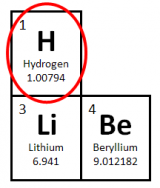Hydrogen Fuel Cell Vehicles
Hydrogen Fuel Cell Vehicles (FCVs) are similar to electric vehicles (EVs) in that they use an electric motor instead of an internal combustion engine to power the wheels. However, while EVs run on batteries that must be plugged in to recharge, FCVs generate their electricity onboard. In a fuel cell, hydrogen (H2) gas from the vehicle’s fuel tank combines with oxygen (O2) from the air to generate electricity with only water and heat as byproducts of the process.
Availability
Several auto manufacturers are selling or leasing FCVs in select markets, primarily in California where some hydrogen fueling stations already exist. Hydrogen infrastructure is also popping up in other locations around the country. Stations are being planned or built in the Northeast and Hawaii, and fuel cell transit buses are already cruising the streets in cities like Boston, Massachusetts, and Flint, Michigan. There are plans to expand FCV offerings over the next few years as infrastructure grows and the technology continues to mature.
See available fuel cell vehicle models
See where hydrogen fueling stations are located in the U.S.
Did you know?
Hydrogen fuel can be produced from water. In a process called electrolysis, electricity is used to split water into H2 and O2. The electricity can come from renewable energy sources such as wind and solar power.
Emissions
Like electric vehicles, FCVs are zero-emission vehicles – they have no smog-related or greenhouse gas tailpipe emissions. Emissions are created in the process of producing and transporting hydrogen fuel.
While hydrogen is abundant in the universe, it must be separated from other compounds to be used as fuel. This process can be energy intensive. The amount of emissions associated with producing hydrogen fuels depends on the source of hydrogen and production method. Currently, the majority of hydrogen that is made for use as a fuel comes from natural gas, but hydrogen fuel also can be made from water, oil, coal, and plant material. Hydrogen can even be produced from your trash! Pilot projects have used landfill gas and wastewater to make hydrogen fuel.
Learn about the different ways to produce hydrogen fuel
Learn more about the emissions from hydrogen production
Fueling and Driving Range
Fueling a hydrogen FCV is similar to refilling your gas tank. Simply attach a nozzle from a designated hydrogen dispenser at a public station and fill up the tank. The refueling times are also similar: FCVs can be refueled in as little as 5 minutes.
Some FCVs can get over 300 miles on one tank of hydrogen fuel — greater than the distance from St. Louis to Chicago — and fuel economy close to 70 MPGe (miles per gasoline gallon equivalent).
Learn more about fuel cell vehicle models


